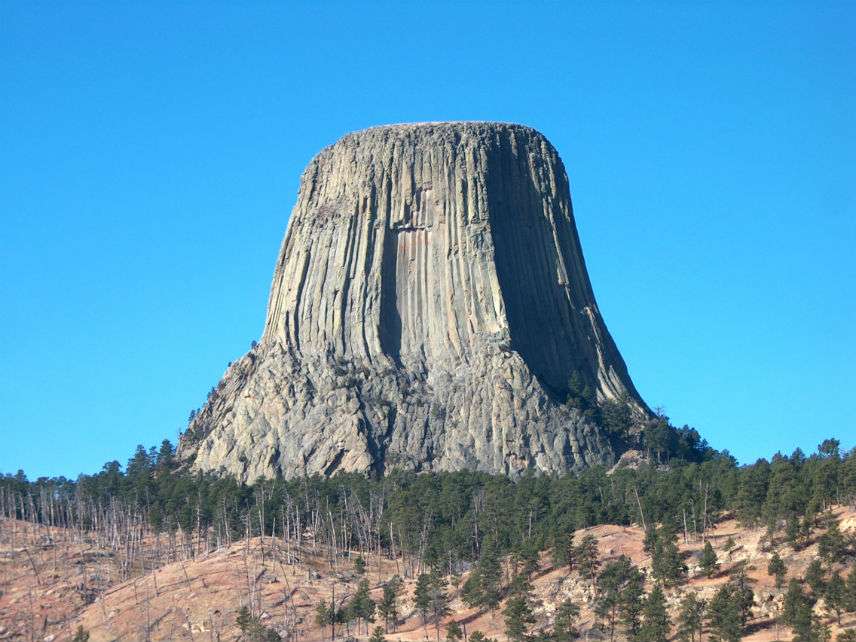Interior Secretary Ryan Zinke Review Proposes Shrinking 4 of 27 National Monuments
Environmental activists go ballistic.

Department of Interior Secretary Ryan Zinke has sent a report to President Donald Trump in which he reportedly proposes to shrink the size of four of the 27 National Monuments he was asked to review. Specifically, Zinke is recommending that the area of Utah's Bears Ears and Grand Staircase-Escalante and Oregon's Cascade-Siskiyou National Monuments be reduced. The 1.9 million-acre Grand Staircase-Escalante Monument was established by President Bill Clinton in 1996. The 1.35 million-acre Bears Ears National Monument was created by President Barack Obama in December last year and he expanded the Cascade-Siskiyou Monument created by Clinton from 65,000 to 113,00 acres in January, 2017.
Naturally, environmental activists are livid. "No president has ever shown such disregard for the public's desire to protect our public lands or such blatant pandering to the industries that want to drill, mine, and log them," asserts the Sierra Club.
Both Grand Staircase-Escalante and Bears Ears Monuments were designated by Democratic presidents who had lost badly among voters in Utah. Both monuments were opposed by the Utah state legislature and the state's congressional delegation. In fact, the Clinton administration notified the Utah congressional delegation and state governor only 24 hours before the ceremony establishing the Grand Staircase-Escalante monument. Clinton was apparently eager to block a proposed coal mine in the region which, by some estimates, would have produced nearly $1 trillion in coal over thirty years.
As recently as this past February, the Utah legislature passed and the governor signed a resolution urging that the boundaries of the Grand Staircase-Escalante Monument be reduced. Among other things, the resolution declared that the creation of the monument has "had a negative impact on the prosperity, development, economy, custom, culture, heritage, educational opportunities, health, and well-being of local communities." Similarly, the state legislature passed in February and the governor signed a resolution urging President Trump to rescind the Bears Ears National Monument designation.
Presidents have the power to designate national monuments under the Antiquities Act of 1906 which states:
The President of the United States is authorized, in his discretion, to declare by public proclamation historic landmarks, historic and prehistoric structures, and other objects of historic or scientific interest that are situated upon the lands owned or controlled by the Government of the United States to be national monuments, and may reserve as a part thereof parcels of land, the limits of which in all cases shall be confined to the smallest area compatible with proper care and management of the objects to be protected.
Can the Trump administration revoke or substantially revise national monument designations? Environmental activists argue that the Antiquities Act is one way ratchet—subsequent administrations do not have the power to undo the creation national monuments. While contested by other scholars, legal analyses by the Congressional Research Service however suggest that while presidents may not have the power to revoke previous designations, they do apparently have the authority to modify them, including making adjustments with regard to their boundaries. This appears to be the strategy being recommended by Zinke; modification, not revocation.
The federal government owns about one-third of the land area of the country which provokes conflicts over its management between central government bureaucracies beholden to national environmental groups versus local communities that use and depend on the resources located on adjacent federal lands. It is not surprising that conflicts between locals and federal bureaucrats are more contentious in Utah since the federal government owns about 65 percent of that state's landscape. Are bitter fights over the proper use of government-owned lands inevitable? Perhaps not.
"It is clear that the politicized approach to national monument protection is broken," assert the researchers at the Property Environment Research Center in Bozeman, Montana. What to do? Establishing federal land trusts to manage national monuments like Bears Ears for the benefit of the general public would be "a better way to balance competing interests," argues PERC research fellow Holly Fretwell. Modeled on local land trusts that already manage about 56 million acres (twice the amount of land in all of the national parks in the contiguous U.S.), national monument trustee boards would consist of representatives from local communities, researchers, environmental organizations, and tribal members.
The boards would be given custodial authority and financial accountability over each monument. Financial accountability is key since it incentivizes the managing trustees to internalize the trade-offs of competing resource use such as recreation, preservation, grazing, mining, and so forth. Such national monument trusts would "be required to cover all costs either from revenues generated from the assets in the monument or from private contributions of funds, property, or services by individuals, corporations, or charitable foundations."
If the Trump administration and Secretary Zinke are in search of ways to encourage cooperation rather than conflict over the use of public lands, they would do well to propose the adoption of federal land trusts.
*Disclosure: I have been the happy beneficiary of grants, conferences, and intellectual enrichment from PERC for many years.
